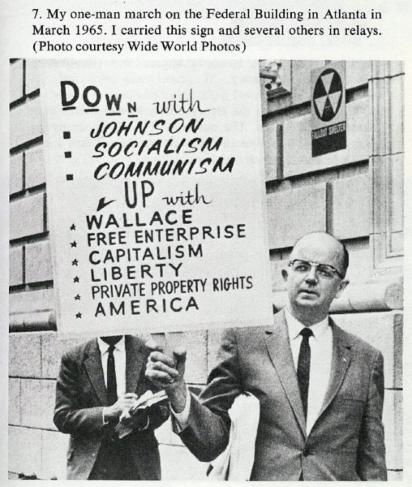Lester Maddox, a figure whose life and career embody the complexities of American politics and social issues, remains an intriguing character in the annals of history. Notably known for his controversial positions and colorful personality, Maddox was both a politician and a business owner. His story is woven with themes of segregation, populism, and an unconventional approach to leadership. Here are ten fascinating facts that illuminate the remarkable facets of his life.
1. The Pickrick Restaurant: A Segregationist Stand
In the 1960s, Maddox gained infamy as the owner of the Pickrick Restaurant in Atlanta, where he upheld a strict policy of segregation. He famously wielded an axe handle to drive off African American patrons. This act was not merely a physical eviction; it was a symbol of his staunch opposition to the Civil Rights Movement. While many condemned his actions, they also sparked debates about civil liberties and individual rights, inviting examination of the profound societal shifts occurring at that time.
2. A Political Career Steeped in Populism
In 1966, Maddox made the leap from businessman to politician, winning the gubernatorial election of Georgia as a staunch populist. His campaign resonated with voters who felt alienated by the political establishment. He positioned himself as the voice of the “common man,” using a blend of folksy rhetoric and confrontational tactics that appealed to his base. This populism reflects a broader phenomenon in American politics, illustrating how charisma can sway public sentiment.
3. Opposition to Moving Forward
Throughout his political ascent, Maddox opposed several progressive measures, particularly those advocating for racial equality. He blocked attempts to integrate public facilities and schools, positioning himself as a defender of “traditional” values in a rapidly changing society. This reactionary stance towards civil rights is a stark reminder of the turbulent social dynamics in America, highlighting the resistance faced by reformers during the period.
4. The Unconventional Inauguration
Maddox’s inauguration as governor in 1967 was uniquely controversial. Instead of the customary celebration, he chose a subdued ceremony at the State Capitol. This choice mirrored his political philosophy; he sought to distance himself from the traditional politics of the elite. His reluctance to embrace the expected highlights his desire to cultivate an image of authenticity among his constituents.
5. Cultural Icon Status
Despite his polarizing views, Maddox transcended political boundaries to become something of a cultural icon. His personality captured the interest of the media, leading him to appear on various talk shows and news segments. These appearances often featured his bombastic style, which, though at times contentious, showcased a certain charm. This duality of acceptance and resistance draws attention to the complexities of fame in the political sphere.
6. The Duality of Leadership
Maddox exhibited a complex juxtaposition in leadership styles that fascinated observers. On one hand, his populist approach reflected a profound connection to his supporters. On the other hand, his controversial stances on race revealed a rigidity that alienated many. This paradox raises questions about the nature of effective leadership and the forces that shape a politician’s legacy.
7. Retreat from Political Office
After his term as governor, Maddox retreated from the political spotlight but did not fade into obscurity. He took on the role of a small business owner, further intertwining his life with Georgia’s socio-political fabric. His withdrawal from direct political engagement highlighted the transient nature of public office and the continual reinvention that many politicians encounter.
8. The ‘People’s Politician’
Maddox often referred to himself as a “people’s politician.” This self-identification underscores his belief in direct engagement with the electorate. He eschewed formalities and engaged in town hall meetings, positioning himself as an accessible figure. This strategy reflects a deeper understanding of grassroots dynamics, demonstrating the power of personal connection in building political capital.
9. A Post-Career Fascination
After leaving the political arena, Maddox captained a second career in law and media, drawing upon his experiences to educate about politics and governance. His reflections on his time in office offer a unique perspective from a man who navigated the stormy waters of civil rights and state leadership. This tethering to historical events aids in demystifying a critical epoch in American political history.
10. Legacy of Complexity
Lester Maddox’s legacy is one of complexity and contradiction. While he is often remembered for his segregationist policies, there’s a broader context in which his life unfolded—a time marked by deep-seated societal changes and tumult. Understanding Maddox requires a nuanced view of the American landscape during the Civil Rights Movement, recognizing how one man’s actions can resonate in ways that extend far beyond his tenure.
In summary, Lester Maddox stands as a multifaceted figure worthy of examination. His life story encapsulates the intricate dynamics of a society struggling to reconcile its ideals with its realities. Through his many endeavors, he challenges us to consider the myriad influences that shape our political landscape and to confront the legacies of our past with a thoughtful lens.









